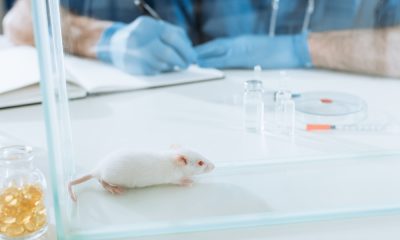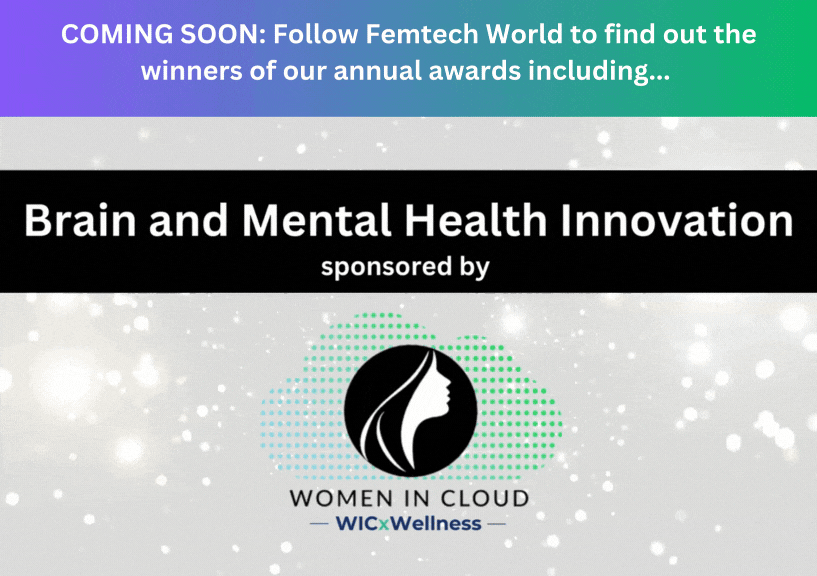Insight
What does ‘non-invasive’ mean in women’s health?

By Gloria Kolb, Co-Founder & CEO – Elitone
When it comes to women’s health, “non-invasive” is often associated with medical procedures that avoid surgery.
While accurate, the term encompasses much more — technically, it means not entering the body, but it’s also about “non-intrusiveness,” which encompasses comfort, accessibility, and the ability to integrate care into daily life without disruption.
From menopause management to fertility tracking, innovations in non-invasive healthcare are reshaping how women approach their well-being.
For example, stress urinary incontinence — a condition in which leaks occur during activities like sneezing, coughing, or jumping — affects one in three women.
These leaks can significantly disrupt daily life, yet the idea of invasive procedures, even through natural orifices, often deters women from seeking care.
Additionally, invasive methods for prenatal testing and diagnosis during pregnancy, such as Amniocentesis to remove and test amniotic fluid from the uterus, can sometimes cause amniotic fluid to “leak through the vagina” and comes with a risk of miscarriage in 0.1-0.3 per cent of cases.
Similarly, more invasive methods to track women’s fertility, including laparoscopies and hysteroscopies, may be linked to post-operative risks like bleeding, pain, discomfort, infection, or damage to the cervix, bowel, uterus, or bladder — all of which could prevent women from seeking the care they need
These potential complications underscore the worry that many women have regarding invasive treatment options.
This is where non-invasive solutions shine, offering not only a surgical alternative but also options that prioritise ease, discretion, and the ability to maintain a busy schedule.
Non-invasive advances across women’s health
Fertility tracking without invasive procedures
Fertility assessments often involve many blood tests and ultrasounds, which can be inconvenient and stressful.
Non-intrusive devices that analyze hormone levels in saliva or urine provide real-time fertility insights, reducing the need for many clinic visits.
These necessary tools give women deeply detailed knowledge of their reproductive health to help prevent the discomfort that naturally comes with invasive testing.
Menopause and vaginal health solutions
Menopause brings several significant changes, including a noticeable degree of vaginal dryness and large hormone fluctuations.
To address this, there are new inventions that use novel and non-invasive technology, such as an ultrasound device that treats vaginal dryness without hormones and vaginal devices or procedures.
While some of these inventions are not yet available, continued improvements in non-invasive technology will provide more options that offer relief while respecting women’s comfort and autonomy.
Period health monitoring
While menstrual blood contains many important health indicators, customary testing methods frequently ignore this vital resource.
Advanced menstrual blood analysis devices, however, provide several key insights into hormonal health, degrees of inflammation, and multiple reproductive conditions by directly testing blood samples obtained from sanitary pads or menstrual cups.
This method is unobtrusive and enables the tracking of health trends over time.
Non-invasive genetic testing for pregnancy
Amniocentesis, an invasive procedure with several risks, has been used for prenatal testing and diagnostics, but this invasive procedure has historically been unnecessary.
Genetic analysis of amniotic fluid is now achievable through the mother’s blood, thanks to non-invasive prenatal testing tests (NIPT).
This improvement makes prenatal screening safer because it only requires providers to take a standard blood sample rather than conduct an invasive procedure that could harm the mother or fetus, thereby reducing stress for expectant mothers while offering important health information.
Weight management and metabolic health
Hormonal balance, metabolic rate, and genetic predisposition are meaningful factors in many women’s weight loss adventures.
Today, many wearable metabolic health devices are available to help women track essential indicators such as glucose and ketone levels.
These devices eliminate the need for more invasive blood tests and allow women to make more easily educated choices about diet and exercise.
Comfort matters: Why non-invasive solutions succeed
One of the most significant barriers to consistent healthcare treatment is discomfort — whether physical, emotional, or logistical.
Many women discontinue treatments that are excessively invasive, remarkably time-consuming, or incredibly inconvenient.
Easy-to-use options make it more likely that women will use them consistently, and minimally intrusive options have the same effect.
Clinicians know that compliance in treatment is one of the largest hurdles in any care.
For instance, many pelvic floor therapy and electrical stimulation devices involve vaginal inserting these devices vaginally to strengthen the pelvic floor.
However, these treatments may produce significant discomfort, which can lead to a decline in use.
On the other hand, external pelvic floor stimulation devices are convenient and comfortable and provide an at-home option for strengthening the pelvic floor that minimally disrupts a woman’s daily routine.
Conversely, alternative menopause treatments exist that acknowledge that hormone therapy, along with vaginal suppositories, is not universally suitable for women.
Wearable cooling devices, acupressure bands, and hormone-monitoring patches offer symptom relief, and they do so with no need for medical intervention.
The future of non-invasive care: Meeting women where they are
Women’s healthcare is rapidly advancing, providing more personalised, convenient, and patient-centred care.
Because women’s health experiences vary from patient to patient, treatment should be tailored to their unique experiences.
Many non-invasive treatments are available to address this diversity, offering a variety of options for personalised management of fertility, menopause, weight loss, and postpartum recovery.
Their appeal lies in effortlessly delivering considerable results.
Today, women can use a number of non-intrusive options to manage their health, including hormone tracking, improved pelvic health, menopause symptom relief, and other aspects of their health.
As technology advances, improving women’s quality of care and life, it will continue to broaden the definition of non-intrusive treatments.
— Gloria Kolb is the CEO and co-founder of Elitone, the first non-invasive, FDA-cleared, wearable treatment for women with urinary incontinence.
Elitone’s accolades include winning Best New Product by My Face My Body, Sling Shot, finalist in Women Startup Challenge, and CES’ Innovation Award. As an inventor with 30+ patents and advocate for women’s health, Gloria has been featured in Forbes as a Top Scientist Driving Innovation in Women’s Health, TechRound’s Top Women in Tech, Boston’s “40 Under 40” and MIT Review’s “World’s Top Innovators under 35.”
She has engineering degrees from MIT and Stanford, and an Entrepreneurship MBA from Babson College.
Features
Early prenatal support cuts postpartum depression by over 80%, study finds

Early pregnancy therapy can cut postpartum depression and anxiety by tackling prenatal anxiety, new research has revealed.
A trial of 1,200 pregnant women in Pakistan found those receiving cognitive behavioural therapy (CBT), a talking therapy that changes patterns of thought and behaviour, had 81 per cent lower odds of postpartum depression or moderate-to-severe anxiety than those receiving usual care.
Only 12 per cent of women in the intervention group developed postpartum depression, compared with 41 per cent in the control group.
The research was led by Pamela Surkan at Johns Hopkins University, in partnership with the University of Liverpool and the Human Development Research Foundation Pakistan.
Surkan said: “We hope this research doesn’t end with evidence, but with implementation.
“Every pregnant woman deserves the chance to thrive, and mental health must be recognised as a core part of maternal health everywhere.”
Among women who attended five or more sessions, the risk of low birthweight (under 2.5kg) and small-for-gestational-age births (smaller than expected for weeks of pregnancy) decreased by 39 per cent and 32 per cent respectively.
The approach was designed to be scalable: therapy was delivered by trained non-specialist counsellors in a public hospital in Rawalpindi, making it accessible and low-cost for health systems without specialist clinicians.
In Pakistan, up to 49 per cent of pregnant women experience anxiety, yet access to mental health care remains limited.
Prenatal anxiety is rarely addressed in public health systems despite long-term consequences for mothers and children.
What began at a global mental health meeting in Washington DC in 2012 evolved into a research partnership spanning 2017 to 2024. Findings from the main trial were published in March 2024.
Beyond clinical outcomes, the research linked better social support, reduced stress and fewer pregnancy-related difficulties to improved mental health outcomes.
To date, 29 peer-reviewed articles have been published from the project, which has established one of the world’s largest datasets on prenatal anxiety in low and middle-income countries and developed an intervention manual ready for wider use.
The team is now focused on scaling, with proposals submitted to test the intervention in new contexts and plans to make the manual publicly available.
Insight
UK gov responds to report into failings in black maternal health
Features
Menstruation linked to longer football injury recovery
-

 Features2 days ago
Features2 days agoCannabis compounds kill ovarian cancer without harming healthy cells, research finds
-

 Opinion2 weeks ago
Opinion2 weeks agoFemtech in 2025: A year of acceleration, and what data signals for 2026
-

 News3 weeks ago
News3 weeks agoInnovate UK relaunches £4.5m women founders programme
-

 Menopause3 weeks ago
Menopause3 weeks agoDoctors push back on ‘data-free’ ruling on menopause hormone therapy
-

 Insight4 weeks ago
Insight4 weeks agoTeeth of babies of stressed mothers come out earlier, study suggests
-

 Fertility6 days ago
Fertility6 days agoMeta removes dozens of abortion advice and queer advocacy accounts
-

 Opinion3 weeks ago
Opinion3 weeks agoWhy women’s health tech is crucial in bridging the gender health gap
-

 Insight4 weeks ago
Insight4 weeks agoIVF linked to higher mutations than natural conception in mice




























